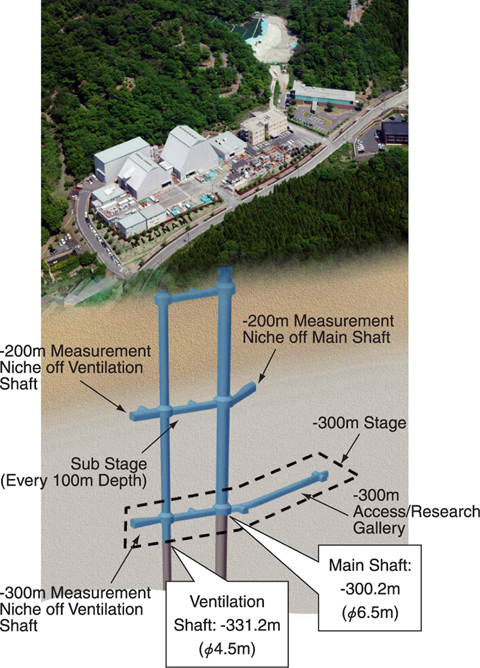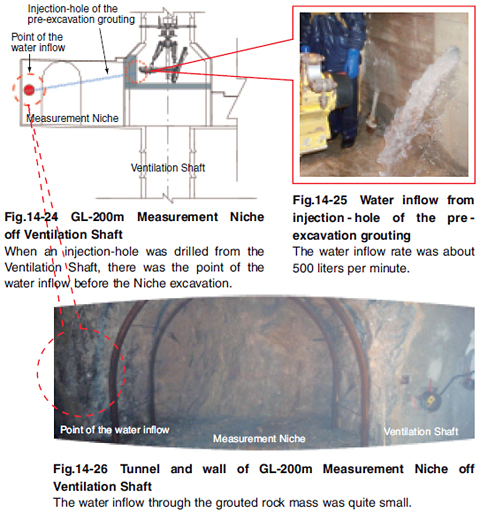
Fig.14-23 Image of the "Mizunami Underground Research Laboratory"

The "Mizunami Underground Research Laboratory", one of the main facilities in Japan for research and development of the technology for high-level radioactive waste disposal, is under construction in Mizunami City. As of March, 2009, the excavation of the Main and Ventilation Shafts had reached GL -300.2m and -331.2m, respectively (Fig.14-23).
In planning the construction, it was necessary to get reliable information on the bedrock conditions, specifically the rock mass stability and hydrogeology. Therefore, borehole investigations were conducted before excavations started. The results indicated that large water inflow could be expected during the excavation around the Ventilation Shaft at GL-200m. In order to mitigate water inflow, pre-excavation grouting was conducted before excavation of shafts and research tunnels. Grouting is the injection of material such as cement into a rock mass to stabilize and seal the rock.
Pre-excavation grouting injection holes were drilled from the Ventilation Shaft at GL-200m. One of these grouting injection holes produced water at an inflow rate of about 500 liters per minute (Figs.14-24 and 14-25). After tunnel excavation, water inflow through the grouted rock mass was reduced considerably. Geological mapping of the tunnel confirmed the successful injection of cement grout into the fractures (Fig.14-26).
In planning the pre-excavation grouting, a target where water inflow must be prevented was established by theoretical analysis to determine rock mass stability and hydrogeological conditions. The pre-excavation grouting was shown to be successful by subsequent excavations of shafts, in which the targeted reduction in water flow was achieved. This is a good indication that the construction of shafts and research tunnels can proceed with water inflow into the facility prevented by pre-excavation grouting.